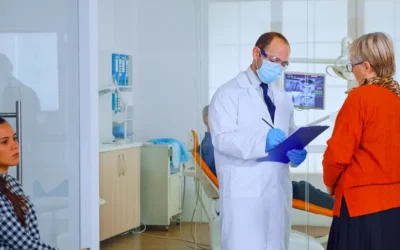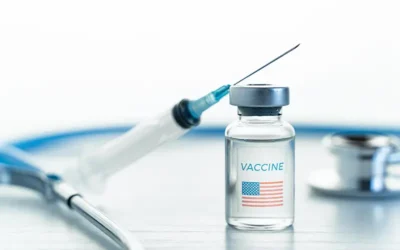Also known as a toothache, pulpitis occurs due to the inflammation of the dental pulp or tissue in the center of a tooth. The innermost part of each tooth comprises an area called the “pulp” – which is formed of soft connective tissue, nerves, and the blood supply for the tooth. This pulp delivers nutrients to the tooth. The condition can occur in one or more teeth and is caused by bacteria that invade the tooth’s pulp, causing it to swell. Practicing good oral habits and scheduling regular dental visits can help people deal with the condition in a better manner. Treatment modalities depend on the type and severity of the condition. Medical billing and coding for pulpitis can be quite challenging. Dental billing service providers knowledgeable in the dental codes and related guidelines can easily manage the coding and claim submission processes for dentists.
There are two different forms of pulpitis – reversible and irreversible. Reversible pulpitis refers to instances where inflammation in the pulp is mild and people have short-lived pain. Typically, the tooth pulp is healthy and with the correct treatment, it is possible to save the tooth and let the nerve to heal. Irreversible pulpitis occurs when there is significant inflammation inside the pulp and the bacteria spreads to the nerves, causing the nerves to die (this is called pulp necrosis, or pulp death). It is estimated that 40 percent of irreversible pulpitis may be painless. If left untreated, the infection can spread to other parts of the body, including the brain.
What Causes Pulpitis?
This condition commonly occurs when bacteria irritate the dental pulp through an area of tooth decay, including dental caries. Typically, in a healthy tooth, the enamel and dentin layers protect the pulp from infection. Pulpitis occurs when these protective layers are compromised, allowing bacteria to get in to the pulp, causing swelling and infection. Other related causes of pulpal inflammation include –
- Trauma or injury to a tooth (such as an impact to the tooth)
- Grinding or clenching the teeth
- Repetitive trauma caused by dental issues, such as jaw misalignment or bruxism (tooth grinding)
- Repeated, invasive dental procedures
- Having a fractured tooth (which exposes the pulp)
- Cavities or tooth decay, which causes erosion to the tooth
- A bad bite or malocclusion (causing extra wear on certain teeth)
Severe and irreversible pain (that can occur throughout the day and night) is one of the typical symptoms of pulpitis. Other related symptoms include – swollen lymph nodes, inflammation, bad taste in the mouth, bad breath and sensitivity to hot and cold and sweet food. The severity of symptoms depends on the type of pulpitis. Pulpitis is diagnosed by conducting a detailed tooth examination wherein X-rays may be taken to determine the extent of tooth pulp damage, decay and inflammation. A sensitivity test may also be done to check the amount of pain or discomfort when the tooth comes in contact with heat, cold, or sweet stimuli. Treatment methods vary depending on whether the pulpitis is reversible or irreversible. Treatments include a combination of pain management medications and other procedures like pulpectomy or tooth extraction.
Medical Codes for Pulpitis
ICD-10 Codes
- K04 Diseases of pulp and periapical tissues
- K04.0 Pulpitis
- K04.01 Reversible pulpitis
- K04.02 Irreversible pulpitis
CDT Codes
- D3110 Pulp cap – direct (excluding final restoration)
- D3120 Pulp cap – indirect (excluding final restoration)
- D3220 Therapeutic pulpotomy (excluding final restoration) – removal of pulp coronal to the dentinocemental junction and application of medicament
- D3221 Pulpal debridement, primary and permanent teeth
- D3222 Partial pulpotomy for apexogenesis – permanent tooth with incomplete root development
- D3230 Pulpal therapy (resorbable filling) – anterior, primary tooth (excluding final restoration)
- D3240 Pulpal therapy (resorbable filling) – posterior, primary tooth (excluding final restoration)
- D3310 Endodontic therapy, anterior tooth (excluding final restoration)
- D3320 Endodontic therapy, premolar tooth (excluding final restoration)
- D3330 Endodontic therapy, molar tooth (excluding final restoration)
- D3331 Treatment of root canal obstruction; non-surgical access
- D3332 Incomplete endodontic therapy; inoperable, unrestorable or fractured tooth
- D3333 Internal root repair of perforation defects
- D3346 Retreatment of previous root canal therapy – anterior
- D3347 Retreatment of previous root canal therapy – premolar
- D3348 Retreatment of previous root canal therapy – molar
- D3351 Apexification/recalcification – initial visit (apical closure/calcific repair of perforations, root resorption, etc.)
- D3352 Apexification/recalcification – interim medication visit (apical closure/calcific repair of perforations, root resorption, pulp space disinfection, etc.)
- D3353 Apexification/recalcification – final visit (includes completed root canal therapy – apical closure/calcific repair of perforations, root resorption, etc.)
- D3355 Pulpal regeneration – initial visit
- D3356 Pulpal regeneration – interim medicament replacement
- D3357 Pulpal regeneration – completion of treatment
Dental medical billing and coding involves using the specific medical codes to report various dental conditions on the claims that providers submit to health insurers. In addition to billing and coding, dental insurance verification and pre-authorization services are crucial to verify the patient’s coverage.
As mentioned above, practicing good oral hygiene and visiting the dentist regularly can help prevent the occurrence of pulpitis. Practicing good oral hygiene habits like – brushing the teeth twice daily, flossing daily, and limiting or avoiding sugary foods – can help remove unhealthy bacteria from the mouth and teeth. Visiting dentists regularly can help seek immediate attention for tooth pain or sensitivity. In addition, individuals who have bruxism can consider wearing a mouth guard at night.
Medical billing and coding for dental disorders like pulpitis can be complex. For accurate and timely billing and claims submission, dental practices can outsource their medical coding tasks to a reliable dental billing company that provides the services of AAPC-certified coding specialists.




